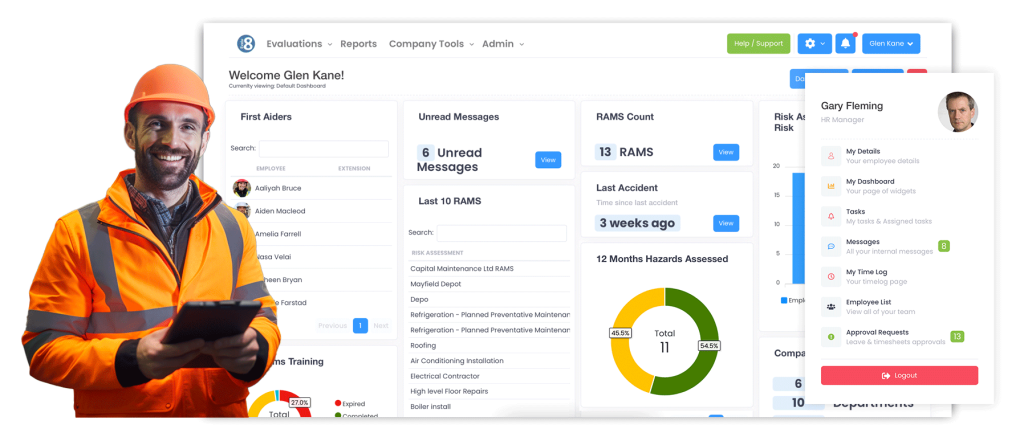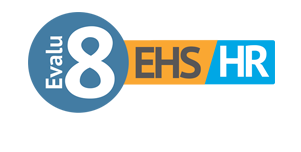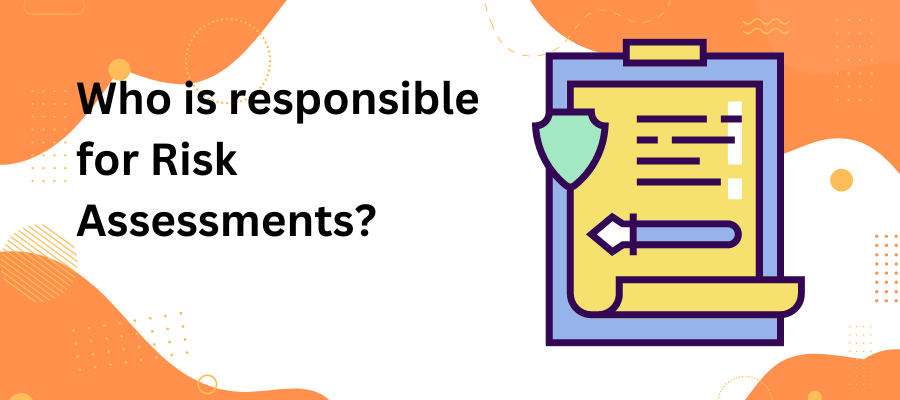In today’s complex world, where safety and security are paramount, risk assessments play a crucial role in ensuring the well-being of individuals and the smooth functioning of organisations. But who exactly is responsible for conducting these assessments? Let’s delve into the world of risk assessments to gain a better understanding of their importance and the roles and responsibilities involved.
Roles and Responsibilities in Risk Assessments
When it comes to risk assessments, responsibility is a shared endeavor. Various stakeholders contribute to the process, each with their own distinct roles and responsibilities.
Role of Management in Risk Assessments
Management holds a crucial position in driving the risk assessment process. It is their responsibility to establish a culture of safety within the organization, emphasizing the importance of risk assessments and ensuring that they are carried out regularly and diligently.
Effective communication and involvement of management in risk assessments are vital for creating awareness, setting priorities, allocating resources, and implementing control measures. By leading by example and promoting a proactive safety mindset, management sets the stage for successful risk assessments.
Employee Responsibilities in Risk Assessments
While management sets the tone, employees also play a significant role in risk assessments. Employees are the eyes and ears of an organization, as they are often the first to identify potential hazards and risks in their daily work routines. Therefore, it is important to encourage employee participation and cultivate a sense of ownership regarding risk assessments.
Employees should be encouraged to report any hazards or risks they come across, as well as provide feedback on existing control measures. By involving employees, organizations can tap into a wealth of collective knowledge and enhance the accuracy and effectiveness of risk assessments.
Legal Obligations for Risk Assessments
Aside from a moral obligation to protect individuals and assets, organizations are legally bound to conduct risk assessments. Failure to comply with these legal obligations can result in severe consequences, such as fines, reputational damage, and even legal action.
Regulatory Requirements for Risk Assessments
The specific regulatory requirements for risk assessments vary depending on the industry and jurisdiction. However, most regulatory bodies require organizations to assess and manage risks in a systematic and documented manner.
Organizations must familiarize themselves with the relevant regulations and ensure compliance by conducting risk assessments at regular intervals, reviewing and updating them as necessary, and maintaining comprehensive documentation.
Consequences of Non-compliance
Non-compliance with legal obligations regarding risk assessments can have serious ramifications. Organizations may face financial penalties, legal liabilities, and damage to their reputation.
Furthermore, failure to prioritize risk assessments can lead to accidents, injuries, and potential harm to employees and the public. By honoring legal obligations, organizations demonstrate their commitment to safety, protect their assets, and safeguard their stakeholders.
The Process of Conducting Risk Assessments
Now that we understand the importance of risk assessments and the various stakeholders involved, let’s delve into the process itself.
Identifying Potential Hazards
The first step in conducting a risk assessment is to identify potential hazards. This involves thoroughly examining the work environment, workflows, equipment, and materials used.
By carefully observing and documenting potential hazards, organizations can gain valuable insights into the risks that need to be assessed and mitigated.
Evaluating and Prioritizing Risks
Once the hazards have been identified, the next step is to evaluate and prioritize the risks associated with each hazard. This evaluation involves considering factors such as the likelihood of an incident occurring and the potential severity of the consequences.
Assessing risks allows organizations to allocate resources effectively and prioritize control measures that are commensurate with the level of risk posed.
Implementing Control Measures
The final step in the risk assessment process is to implement control measures to mitigate the identified risks. Control measures can include engineering controls, administrative controls, and personal protective equipment.
Organizations must ensure that the implemented control measures are effective and regularly evaluated for their ongoing efficiency. This requires periodic review of the risk assessments to identify any changes or emerging hazards that may require additional control measures.
Training and Education for Risk Assessments
Conducting effective risk assessments requires a specific skill set and knowledge base. Organizations should provide their employees with relevant training and education to enhance their capabilities in this field.
Necessary Skills for Conducting Risk Assessments
Individuals responsible for conducting risk assessments must possess a range of skills, including hazard identification, risk evaluation, and knowledge of applicable regulations. Training programs should focus on developing these skills and providing practical tools for conducting thorough and accurate risk assessments.
Resources for Risk Assessment Training
Fortunately, there are numerous resources available to organizations seeking to enhance their risk assessment capabilities. These resources include training courses, webinars, publications, and consultancy services.
By investing in quality training programs and leveraging these resources, organizations can ensure that their employees have the necessary skills and knowledge to conduct effective risk assessments.
In Conclusion
Risk assessments are a shared responsibility, involving management, employees, and compliance with legal obligations. By understanding the process and roles involved, organizations can create safer working environments, protect their assets, and fulfill their duty of care to both employees and the public.
By committing to ongoing training and education, organizations can enhance their risk assessment capabilities and ensure that they are well-equipped to identify, evaluate, and mitigate potential hazards and risks.
Ultimately, the responsibility for risk assessments rests with all individuals within an organization, as safety and security are collective endeavors that require vigilance, collaboration, and a proactive approach in identifying and managing risks.
Watch a 5 minute video of Evalu-8 EHS
“It has brought all of our health and safety under one roof and made it easy for me to see all the data”
Get to see exactly how our software can work within your current processes to help your organisation grow a positive safety culture.




